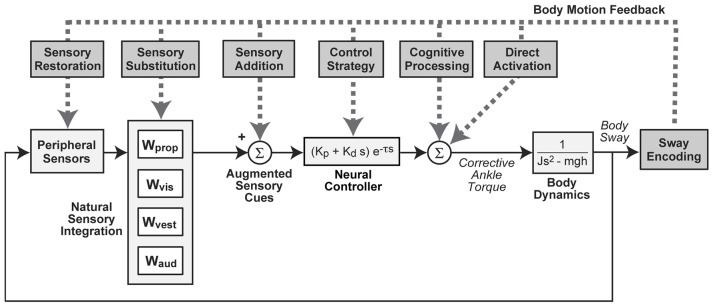Figure 1.
Block diagram representation of a simple feedback control model of balance showing potential modes of action by which measures of body sway could be used to improve balance control via sensory augmentation effects on different subsystems or by direct activation (e.g., functional electrical stimulation). Natural sensory integration is represented by a weighted combination of proprioceptive (Wprop), visual (Wvis), vestibular (Wvest), and auditory (Waud) orientation information. Corrective torque generation is represented by a “neural controller” with stiffness (Kp), damping (Kd), and time delay (τ) parameters. Corrective torque is applied at ankle joint level to an inverted pendulum representation of the body with moment of inertia (J), mass (m), center of mass height (h). “s” is the Laplace variable and “g” is acceleration due to gravity.

